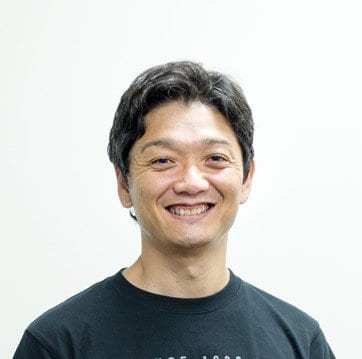Keigo Onishi is the CEO and Product Manager of LiLz. He has over ten years of experience in embedded software engineering and product management in multiple fields such as digital consumer electronics, embedded development, web application, IoT, and AI. He founded LiLz in 2017. In this interview, Keigo Onishi talks about what his company has to offer and what’s next for the startup.
E-3 Magazine: What exactly does LiLz offer?
Keigo Onishi: We provide LiLz Gauge, an IoT/AI solution for remote inspection of analog gauges. In order to reduce downtime and optimize energy management, which are the critical goals of equipment maintenance, it is necessary to understand the operating status of each facility in detail every day. However, many facilities still contain a large number of analog gauges that can only be inspected manually, which is time consuming and inefficient. This process can’t be easily automated with IoT or AI systems because many facilities lack necessary power and network supply. Our service is a combination of ultra-low power consumption IoT cameras that can run continuously for three years when shooting three times per day, and AI algorithms that estimate values of analog gauges using computer vision and machine learning. It’s a novel solution that will allow customers to dramatically improve the efficiency of visual inspections.
How does your solution work?
Onishi: LiLz Gauge consists of IoT cameras and a maintenance data management cloud service charged with prediction algorithms. Users install our camera in front of target gauges and set its shooting conditions, such as the schedule (e.g., 3 times per day, every hour, etc.), flashlight, and photoshoot resolution. The IoT camera has a built-in LTE module that it uses to upload images to our cloud service over LTE Cat 1 private network. Inside LiLz Gauge cloud service, users can annotate gauges in uploaded camera images, and this data is used by our estimation algorithms to predict measurement values for each new uploaded image, converting analog gauge measurements into digital data. Our web interface allows users to manually confirm predictions, as well as edit any wrong predictions, which helps to improve estimation accuracy on future images. For gauges clustered together, a single camera can be used to inspect and digitalize multiple gauges simultaneously. When in standby mode, which is used at all times other than when shooting and uploading images, LiLz Gauge IoT camera operates at μA level, thanks to which it can run continuously for weeks or even years, depending on shooting frequency, without charging. And it can be charged with a standard mobile battery, further adding to its ease of use. Since the cloud service operates as a web application, it can be accessed through browsers, smartphones, and tablets, allowing remote inspection from anywhere.
Do customers need special devices to use your solution?
Onishi: In addition to our cameras, customers need to prepare accessories to install cameras at their sites, and an iOS device running our app to set desired camera settings. Once cameras are installed, any device running a browser can be used to access LiLz Gauge.
Why did you found Lilz?
Onishi: We started the company with a mission to make fieldwork easier through fusion of IoT and machine learning. As my father is an electrician, I was exposed to fieldwork operations since childhood, and I think that’s where the notion to free field workers from inefficient operations came from. Currently, an estimated 30 million analog gauges are inspected daily around the world. IoT and AI have been gaining attention for years now, but most initiatives in the field never make it past proof of concepts, and I feel that despite all the progress in technology, fieldwork isn’t getting any easier at all. We have put a lot of thought into building our service so that it really makes our clients’ operations easier.
How could your solution potentially help customers navigate the COVID-19 pandemic and the different challenges of reopening?
Onishi: The COVID-19 pandemic constrains the movement of people, driving demand for remote inspections. LiLz Gauge makes it possible to check the status of a facility’s analog gauges without having to be physically present at the location. LiLz Gauge also enables inspectors and stakeholders to remotely grasp and analyze the condition of the facility from anywhere, even if the facility is located abroad.
How are you connected to SAP?
Onishi: During our participation in SAP.io’s Tokyo program, we built a proof-of-concept integration of LiLz Gauge with SAP’s AIN (Asset Intelligent Network) that exports analog gauge images and readings from LiLz Gauge to AIN. This allows AIN customers to extend the view of their facilities with analog gauges data that they weren’t able to capture in AIN before.
What’s next for Lilz?
Onishi: We want to contribute to equipment maintenance operations worldwide. We are aiming to obtain FCC and CE certifications for our IoT cameras by 2022, so that they can be used globally. We are also working on making our cameras explosion-proof, so they can be used for maintenance of equipment at chemical and gas plants. Utilizing data that we continue to accumulate, we are also working on algorithms that will provide predictive maintenance capabilities to our clients.
Thank you for the interview.
Enjoyed this interview in our SAP Startup Spotlight Series? You might also like our piece on Future Grid, a software that turns smart meter data into improved grid reliability, asset management, and customer safety.


















![lilz keigo onishi gauge maintenance [shutterstock: 1818108494, Eakrin Rasadonyindee]](https://e3zine.com/wp-content/uploads/2021/04/lilz-keigo-onishi-gauge-maintenance-shutterstock_1818108494.jpg)



Add Comment